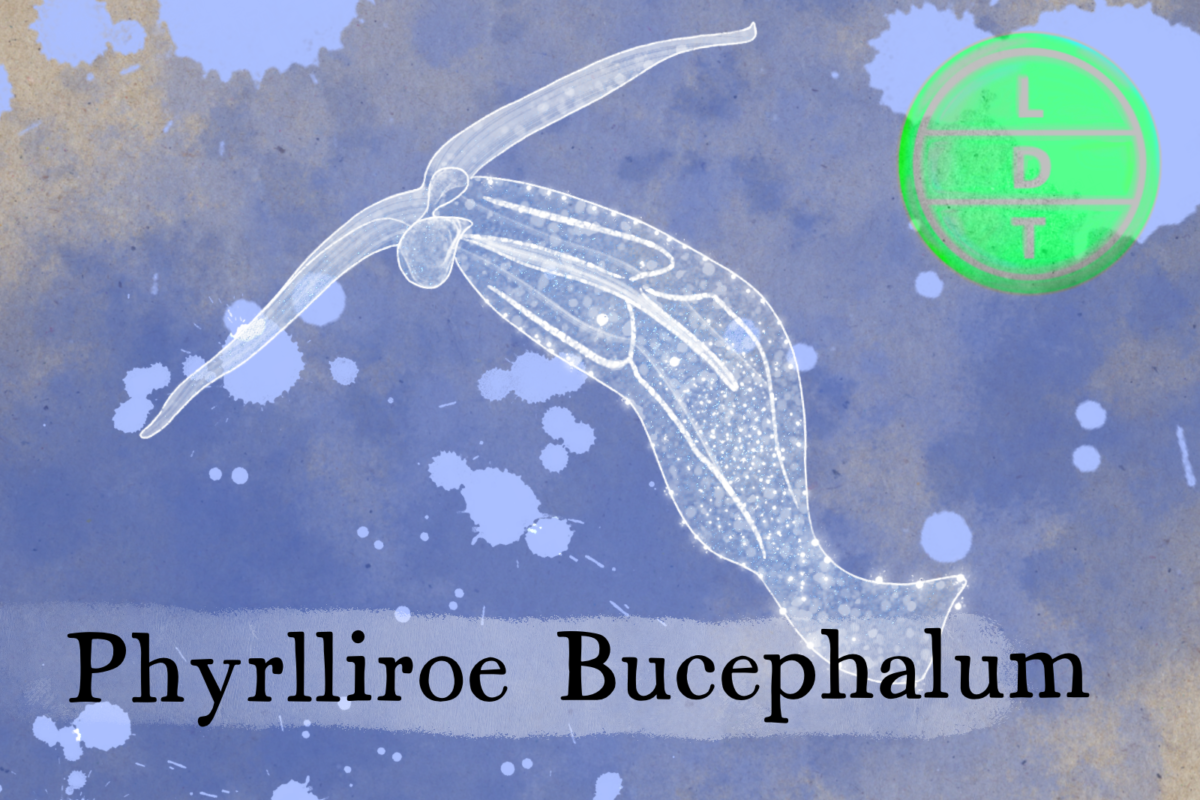“…and today we are talking about an impostor that’s not among us, but among the fish of the sea. But more on that later.”
Humans have explored nearly every biome on earth, but when it comes to getting around in the ocean, we are clearly outmatched. Fish are built to ride waves and currents with ease. To effectively navigate the water, we need to mimic fish by wearing fins. One sea slug looked up from the reef to see some tasty resources and did something very similar. Sometimes there’s more than one way to get past a problem, but other challenges require a single solution in Life, Death, and Taxonomy.
Description of the Phylliroe
- It looks like an enchanted doodle of a squid fish that came to life.
- If Elden Beast and the spirit of the forest from Princess Mononoke had a guppy together.
- It’s oblong with a completely clear body speckled with little white flecks of light.
- You can see its semi-clear organs inside along with its red digestive track that spreads out like an x across its body – kinda looks like the spidey symbol on spiderman’s back.
- It also has two large antennae that look like a spectacular mustache. These are called rhinophores or “long horns.”
- Other than that, there’s nothing interesting about it and it’s not in any interesting shape.
Measure Up
Welcome to the beloved Measure Up segment. The official listener’s favorite part of the show! The part of the show when we present the animal’s size and dimension in relatable terms through a quiz that’s fun for the whole family. It’s also the part of the show that’s introduced by you when you send in audio of yourself saying, singing, or chittering the words Measure Up into ldtaxonomy at gmail dot com. We don’t have a new Measure Up intro!
- Lion
- Mountain Lion
- Sea Lion
- Lionfish
Length
- 2.2 inches (5.5 cm)
- This body of water is 48,960 Phylliroe across at its widest point. What is it?
- Hint: It’s widest at the city of Edfu. The river is also 26 to 36 feet deep on average.
- The Nile River is 1.7 miles wide at its widest.
Egg Clutch
- They lay relatively few eggs compared to kin with only 240 eggs per clutch.
- How many of the number of eggs used in a traditional 9-inch, two layer cake go into the number of eggs in a Phylliroe clutch?
- Hint: Eggs give cakes structure and cohesion. You can make a cake without eggs or egg substitutes, but they will be less firm and more crumbly. They also contribute to flavor, moisture, and emulsification.
- 60 cakes worth of eggs. There are around four eggs in a typical cake.
Fast Facts about the Phylliroe
- Range: Lives in the warm waters across the world’s oceans
- Diet: They eat zanclea, a type of hydrozoan which are little tiny jellyfish.
Major Fact: Fake Fish
Phylliroe are sea slugs that have developed an anatomical form that is very similar to the fish of actinopterygii.
Most sea slugs live and move like slugs. They crawl along the sea floor or among the coral. If they swim, it might be in a ribbon-like pattern.
The Phylliroe swims, moves, and even acts like a fish. Even though they sport bioluminescence, they don’t live in the deep sea. Rather, they live in the open ocean close to the surface.
Their biggest challenge is the fact that they love the taste of jellyfish that float on currents in the open ocean–not in the rocks and crevices on the seafloor.
To hunt in the open ocean, you need to become an adept swimmer. So, what can a slug do to get better at swimming, it can develop fins.
They locate fish with two long appendages near the front of their faces called rhinophores, which are chemoreceptors. When it finds a jelly, it starts acting like a slug again, by using its foot. Many gastropods cling to surfaces with a long foot that runs the length of their underside.
Phylliroe feet are much smaller, since they’ve devoted a lot of their anatomical real estate to develop a fish-like tail fin. But a small sticky foot remains near their mouth, allowing them to cling to their food.
Not only do they have fins, they have a general body shape that is extremely fish-like. This is something in nature called convergent evolution, which is when two different species develop traits that are very similar, despite the fact that they don’t have any genetic relationship.
This often happens because animals in similar conditions need similar tools. The best form to take when getting around the open ocean, just might be the form of a fish. Even humans strap fins to their feet when they go snorkeling.
Ending: So snack on some cnidarians, flex your impressive mustache horns, and impersonate a fish like the Phylliroe here in LDT.

